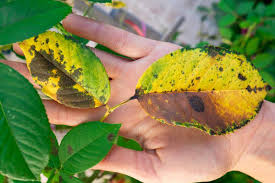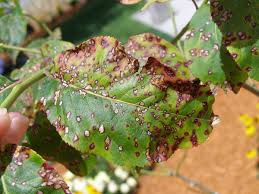A plant disease is impairment of the normal state of a plant as it modifies or interrupts its vital functions. Crop diseases are common on our farms which most at times are difficult to identify.
Students are always encouraged to collect specimens of these diseases and preserve them for better understanding.
Disease symptoms appear at various stages of plant growth and development which at the end affects the productivity of the crop.
A disease photo album should provide the name of the disease and the crop it affects, the casual organism and possible control measures.
Procedure

1. Obtain/collect your specimen
Each specimen should consist of a stem with attached leaves and, if at all possible, flowers and/or fruits. The roots of herbaceous plants should also be included.
In the case of very large trees, shrubs, or vines, pieces should be selected to illustrate to the greatest extent possible the overall characteristics of the plant and the range of variation in flowers, leaves, and other structures.
Read Also : How to treat Ruminant Animal Diseases
2. Assign a collection number
Data for each collection should be entered in a field notebook and the number should be written on the folded paper containing the specimen. Do not trust your memory for this information.
3. Press your specimen rigidly to expel moisture
The objective of pressing plants is to extract moisture in the shortest possible time, while preserving the morphological integrity of the plant.
A plant press, consists of a wooden frame (for rigidity), corrugated cardboard ventilators (to allow air to flow through the press), blotter paper (to absorb moisture), and folded paper, typically a newspaper (to contain the plant material). The plant press is tightened using straps with buckles or bolts with wing nuts.
4. Preserve in a cool dry place

Plants should be carefully arranged as they are placed in the press to maximize preservation of diagnostic features-leaves, flowers.
Fruits should be spread out so that they do not overlap and can be observed from different perspectives.
Advantages
It is ideal for proper study of the plant disease and its control
It assists the farmer to appreciate the damages done to the crops and the intervention package proffered.
It serves as a reference point for the future
Disadvantages
Collection and the entire process is tedious and tasking
Preservation of collected materials is costly if the natural form of the diseases should be maintained
Worked Example
Below are samples of diseases for collection, preservation and identification.
A typical disease album with carefully arranged specimens.
Select 3 crops common in your locality and identify the prevailing diseases. Prepare a disease album for the selected crops.
Read Also : Types of Hunting and their Negative Effects on Forest and Wildlife
